PeopleQlik #1 Learning management software in Saudi Arabia (LMS) are software applications or web-based technologies that allow you to plan, execute and evaluate a learning process. It is used for eLearning practices and, in its most common form, consists of two elements: a server that performs the base functionality and a user interface that is operated by instructors, students and administrators.
A learning management system is typically used by instructors to manage student participation, create content and evaluate student performance. A learning management system may also provide students with the ability to use interactive features such as threaded discussions, video conferencing and discussion forums.
PeopleQlik #1 Learning management software in Saudi Arabia

LMSs are frequently used by businesses of all sizes, national government agencies, local governments, traditional educational institutions and online/eLearning-based institutions. LMSs can enhance traditional education methods and save organizations money. Administrators and instructors will be able to manage user registrations, content, calendars and user access with ease.
To encourage standardization of learning management systems, the Advanced Distance Learning group sponsored by the United States Department of Defense has developed a set of specifications known as Shareable Content Object Reference Model.
What is the purpose of learning management software?
LMSs can be beneficial for a variety of organizations, including corporations and higher education institutions. The primary use of a learning management system is for knowledge management (KM). KM is the process of organizing, sharing, and analyzing knowledge within an organization in terms of documents, resources, and people skills. The specific role of an LMS depends on the training strategy and goals of the organization.
Moodle, Blackboard Learn, and Schoology are some of the most popular LMSs that educational institutions use. Adobe Captivate Prime and Docebo LMS are popular enterprise-level LMSs.
Employee training and onboarding is one of the most common use cases for an LMS in a corporate environment. The LMS can be used to train new employees, providing access to training materials on a variety of devices. Employers can recognize new employees by allowing them to share their knowledge and provide feedback. This will help them understand the effectiveness of training courses and pinpoint areas that need additional assistance.
Learning management software in Saudi Arabia is also useful for enterprise training. This includes training customers, partners, and members. Software and technology companies often offer customer training. Users need to learn how the system works before they are able to use the product. Providing ongoing customer training will also help improve customer experience and increase brand loyalty.
Another common use of LMSs in corporate environments is for employee development and retention. The LMS can be used to assign the necessary courses to current employees to ensure they are developing effective job skills, remain informed about product changes and maintain relevant knowledge through new product and compliance training.
What is the working principle of learning management systems?
A learning management system can be thought of as a large repository that allows users to store and track information in one place. Anyone with a password and secure login can access the system as well as its online learning resources. Or, if the system is self-hosted, the user must either install the software on their hard drive or access it through their company’s server.
A successful LMS will have the following features:
Responsive design –The LMS should be accessible from any device, no matter what type, including a smartphone, tablet, desktop or laptop. The LMS should display the most appropriate version for each user’s device automatically. The LMS should allow users to download content, so that it can be accessed offline.
Friendly interface The user interface (UILMS platform should be easy to navigate for learners. Both the goals and abilities of the users and the organization should be reflected in the UI. Unintuitive UIs can confuse or distract users, and make the LMS less effective.
Analytics and reports This includes eLearning assessment tools. Administrators and instructors must be able view and track the online training programs they have created to determine whether they are working or not. This can be used for both individuals and groups.
Management of courses and catalogs All eLearning courses as well as related course content are stored in the LMS. Administrators and instructors need to be able create and manage these courses and catalogs in order to provide a better learning experience.
Interoperability and integration of content All content created in an LMS should be packaged according to interoperable standards including SCORM.
Support services Different LMS vendors offer different levels of support. Many provide online Discussion boards Users can find each other and connect. For an additional fee, you can get additional support services such as a dedicated number toll-free.
Support for compliance and certification This feature is crucial for systems that are used online. Compliance Training and certifications. Administrators and instructors should be able assess the skills of an individual and to identify gaps in their performance. This feature allows for the use of LMS records during audits.
Social learning capabilities Many LMSs now include social media tools in their platforms. This allows users to communicate with their peers, collaborate, and share their learning experiences.
Gamification LMSs may include game mechanics, or even built-in gaming. Gamification Instructors and administrators can create engaging courses by using these features. Students who require additional motivation to complete the course can use this feature, such as leaderboards, points, and badges.
Automation –Administrators should be able to use learning management systems in Saudi Arabia. Automate It is tedious and repetitive work. Examples include user grouping, new user population, user deactivation and group enrollments.
Localization –Multilingual support features are important in LMSs so that learning and training content is not affected by language barriers. LMSs can integrate Geolocation They can automatically display the correct version of the course upon access.
Artificial intelligence (AI). Finally, Artificial intelligence An LMS can create personalized learning experiences by offering course formats that are tailored to users’ needs and suggesting topics that may be of interest based on courses already completed.
Different types of learning management software
There are many options for LMS deployment:
- Cloud-based
- Self-hosted
- Desktop application
- Mobile application
LMSs cloud-based : They are often hosted on the cloud, and follow a common pattern. Software as a Service Business model of the SaaS (Software as a Service). The system is maintained and upgraded by cloud-based LMS vendors. Online users can log in using their username and password to access the system at any time.
LMSs that are self-hosted : The user must download the software. Self-hosted platforms allow for greater creativity and customization but require that users maintain the system and pay for any updates.
LMSs for desktop applications : These are installed on the user’s computer Desktop. The application might still be available on different devices.
Mobile application LMS Mobile: learning is supported and can be accessed from any mobile device. This platform deployment type allows users the ability to track and engage with their online learning initiatives while on the move.
There are many pricing options available for learning management systems, including:
- Freemium – This pricing model allows users access to the most basic features of certain LMS platforms. After users begin to use the more advanced functions of the system, a fee is charged.
- Subscription – Users pay an annual fee to have access to the LMS. A subscription can grant access to all LMS features to an organization, or it could require that each user be paid for.
- Licensing is a fee for which companies must renew each year or an upfront payment that grants users unlimited lifetime access.
Learning management systems have many benefits
No matter what type of organization uses it, learning management systems offer a wide range of benefits. An LMS can help organizations save time and money. LMSs are a better option than making learners travel long distances to attend lessons or training. They allow students to complete their coursework when it is most convenient for them. LMSs can also reduce costs by eliminating the need to hire instructors, trainers, or location-hiring professionals.
Learning management systems also offer other benefits, such as:
- The ability to track user performance and progress;
- Increased eLearning accessibility without geographic restrictions
- The ability to personalize your online training experience and learning experience
- The ability to quickly and efficiently modify eLearning modules or activities
- The ability to quickly ensure that online training and learning materials have been distributed effectively.
- Automation allows users to focus on more important tasks by allowing them to forget about repetitive, tedious tasks such as certification distribution and user enrollment.
LMSs also offer centralized learning, which is a major benefit. It allows an organization to safely organize and store all big data in one location. Administrators and instructors can update and maintain their learning materials more quickly. This also allows for consistent training across organizations. Furthermore, most LMSs include advanced encryption features that help guarantee the data and content remain secure.
Here are some examples of learning management software
Learning management software in Saudi Arabia is used most often for employee training and onboarding, as mentioned previously. Instructors can use an LMS to create engaging learning experiences that help users develop new skills and problem solving abilities. For example, an LMS could be used to create tutorials that incorporate augmented reality (AR), virtual reality (VR) and even AI training. This will likely increase creativity and innovation in the workforce.
An LMS can also be used to train salespeople. This includes onboarding and training. However, it can also include creating seminars on customer interaction, product knowledge, and case study-based tutorials. These will help clients improve their future interactions.
Students can also use an LMS to offer blended learning experiences. Blended learning is a combination of traditional classroom teaching and online learning. Blended learning is more effective than traditional face-to-face education. It enriches the classroom experience with digital content that can be tailored to each student’s learning needs.
Learning management software in Saudi Arabia in Mecca, Medina, Riyadh, Khamis Mushait, Yanbu, Jeddah, Dammam, Unaizah, Uqair, Ha’il, Ta if, Al Bahah, Dhahran, King Abdullah Economic City, Najran, Diriyah, Qatif, Khafji, Jubail, Abqaiq, List of Cities and Towns in Saudi Arabia, Ras Tanura, Turubah, Jazan Economic City, Knowledge Economic City, Medina, Khobar, Abha, Tabuk, Saudi Arabia,
Call us at +966547315697 or contact sales@bilytica.com for a demo. The Learning Management Software in the Saudi Arabia team will be happy to serve you.
We also provide
Learning management software in Saudi Arabia services solutions company in Hafar Al-Batin, Udhailiyah, Al-Awamiyah, Hofuf, Hautat Sudair, Buraidah, Tayma, Duba, ‘uyayna, Saihat, Al-Kharj, Al-ula, Jizan, Rumailah, Ar Rass, Arar, Shaybah, Al Majma’ah, Rabigh, Dhurma, Haradh, List of Saudi Cities by Gdp Per Capita, Badr, Sudair Industrial City, Baljurashi, Shaqraa, Al-Khutt, Habala, Ad Dawadimi, Dawadmi, Layla,
HR System in Saudi Arabia in Haql, Afif, Al-Abwa, Farasan, Al-Jaroudiya, Thadig, Al-Thuqbah, Al Wajh, Almardmah, Al-Zilfi, Muzahmiyya, Prince Abdul Aziz Bin Mousaed Economic City, Tharmada’a, Skaka, Um Al-Sahek, Sharurah, Tanomah, Bisha, Dahaban, Al Qunfudhah, Qurayyat, Saudi Arabia, Ha’ir, as Sulayyil, Al Lith, Turaif, Al-Gway’iyyah, Samtah, Wadi Ad-Dawasir, Az Zaimah, Safwa City, Jalajil, Harmah, Mastoorah, Hotat Bani Tamim, Jabal Umm Al Ru’us, Rafha, Qaisumah, Al-Ghat, Hajrah, Al-Hareeq. Excerpt: Jeddah (also spelled Jiddah, Jidda, or Jedda; Arabic: Jidda) is a Saudi Arabian city located on the coast of the Red Sea and is the major urban center of western Saudi Arabia.
Click to Start Whatsapp Chatbot with Sales
Mobile: +966547315697
Email: sales@bilytica.com
HR Solution in Saudi Arabia
HR Software in Saudi Arabia
Benefits Of HR Management in Saudi Arabia
HR Software in Saudi Arabia
HRIS Software in Saudi Arabia



